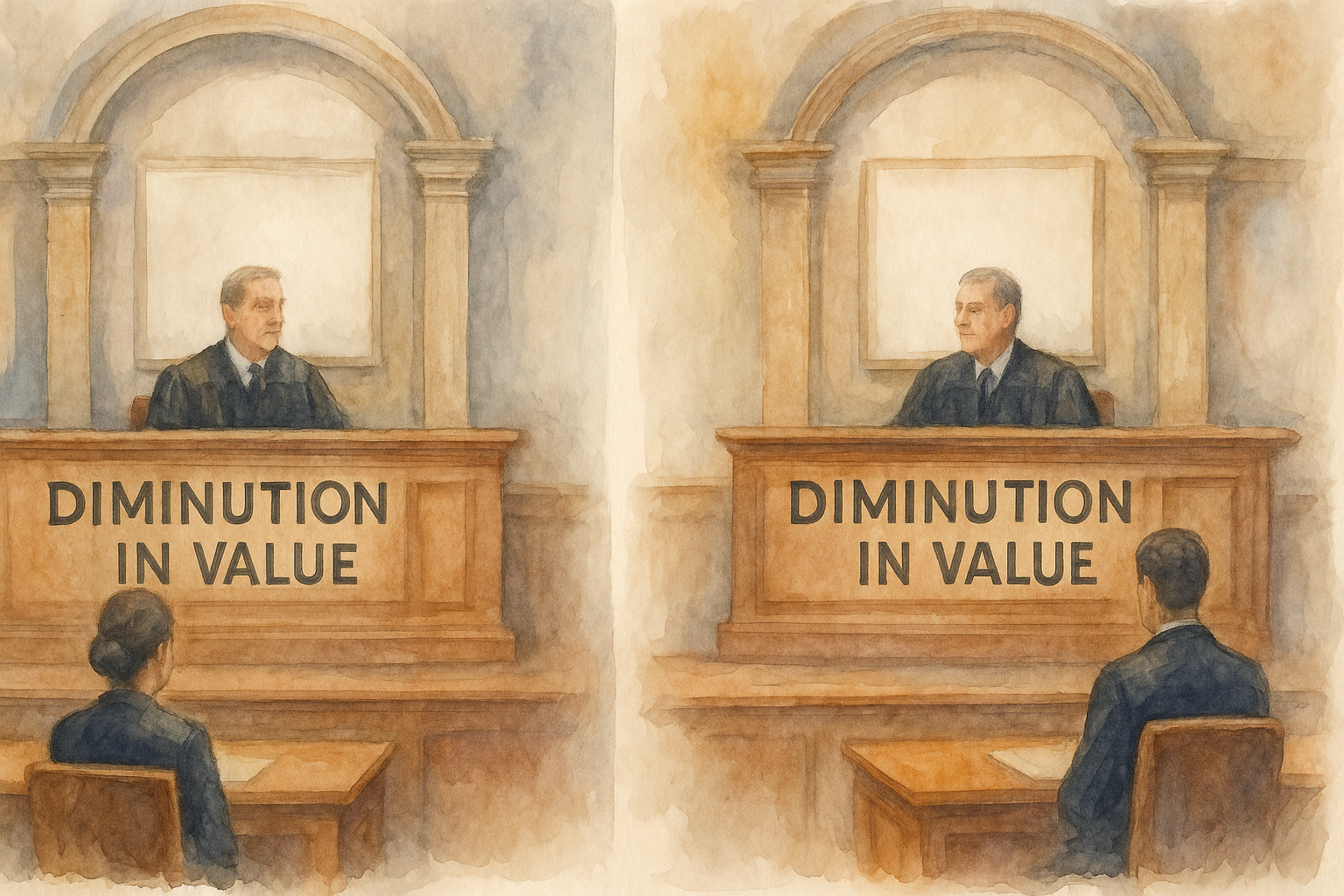McCausland Holdings Ltd v Tesco Underwriting Ltd [2025] NICty 4, is a Belfast County Court judgment that addressed diminution in value in car accident claims. Lacey Solicitors addressed diminution in our previous article last month and comon issues for insurers dealing with these types of claims.
This new judgment however also addresses whether both the bailee and bailor following a car accident can bring claims seperately for repairs and depreication, or does a settled claim extinguish all rights of further recourse?
This case is helpful insofar that it revisits a number of important principles namely diminution in value, and bailment, while confirming the continuing relevance of res judicata and the rule in Henderson v Henderson in the context of motor claims.
The Facts
The Plaintiff, McCausland Holdings Ltd, owned a Toyota Prius provided to a driver, Mr Hamid, under a Rent-to-Own agreement. In May 2023, the vehicle was involved in a collision with a driver insured by the Defendant, Tesco Underwriting Ltd. Mr Hamid issued proceedings for vehicle repairs, hire charges, and loss of earnings. That case settled for £5,000 “in full and final settlement of any claims on behalf of the plaintiff arising out of the accident…”
Subsequently, McCausland Holdings Ltd issued a separate action, seeking £1,000 in respect of diminution in market value of the vehicle. The Defendant sought to strike out the new action.
Bailor and Bailee: Who Can Sue?
The court reaffirmed the principle from The Winkfield [1902] P 42 and Armstead v RSA [2024] UKSC 6 that both bailor and bailee may have rights to claim, but double recovery is impermissible:
“A bailee in possession of property can claim damages from a stranger whose negligence results in the loss of, or physical damage, to the property.” [para 8]
District Judge Logue confirmed:
“There existed a bailor/bailee relationship between Mr Hamid and McCausland Limited… The possession of the subject vehicle was for a specific purpose and with the permission of the legal owner.”
Quoting the Supreme Court in Armstead, she further noted:
“The bailor and bailee may each be entitled to sue for loss of or damage to property. The only restriction is that there cannot be double recovery… A wrongdoer who has already paid compensation to the bailee… has an answer to such a claim by the bailor.”
Diminution in Value in Car Accident Claims or Depreciation: Two Sides of the Same Coin
A question for the court was whether depreciation following repairs was a distinct loss from the cost of repair, and therefore separately recoverable? The Court came to the determination that both are merely different methods of quantifying diminution in value.
Citing Coles v Hetherton [2013] EWCA Civ 1704, the Court emphasised:
“The proper measure of [damage] is the diminution in value… This follows the general principle in awarding damages, ie that of restitution… If the chattel can be economically repaired, the claimant is entitled to have it repaired… although the claimant is not obliged to repair… to recover the direct loss suffered.”
And crucially:
“Depreciation is not a separate distinct loss, it is part of the measure of the direct loss, i.e., the overall diminution in value arising from the damage caused.”
“The cost of repairs and depreciation are elements of diminution in value and do not represent different losses – they are both measures of the same direct loss.”
Res Judicata and Abuse of Process
The Court held that Mr Hamid’s earlier proceedings had already dealt with the diminution in value of the vehicle, notwithstanding that depreciation was not explicitly pleaded as a head of claim in the Replies to Particulars.
“In pursuing a claim for the cost of repairs Mr Hamid has already brought a claim for diminution in value of the subject vehicle setting out a claim for general damages in respect of same.”
The signed settlement agreement between Mr Hamid and Tesco Underwriting explicitly stated it was:
“In full and final settlement of any claims on behalf of the plaintiff arising out of the accident.”
Drawing from Henderson v Henderson [1843] 3 Hare 100, the Judge confirmed:
“The rule requires parties to bring forward their whole case… and will not (except under special circumstances) permit the same parties to open the same subject of litigation in respect of matters which might have been brought forward…”
While the Plaintiff’s counsel sought to invoke Johnson v Gore Wood & Co [2000] UKHL 65 and the Article 6 ECHR right of access to justice, the Court found those arguments unpersuasive:
“There is no interference with the plaintiff’s Article 6 rights as the claim for diminution in value has already been advanced and settled.”
Conclusion
District Judge Logue’s decision to strike out the claim is a careful and thorough application of a number of important principles in litigation. It guards against duplicity of proceedings, reaffirms the position in diminution in value in car accident claims and ensures that defendants are not exposed to serial litigation by different parties for what is in truth a single harm.
“The earlier action included a claim for cost of repairs. Those costs were claimed as general damages… I find that a claim for diminution in value… has already been advanced, and the plaintiff is precluded from re-opening the claim.”
For insurance law practitioners, this case is a prime example of how established doctrines in bailment, damages and procedural fairness intersect in modern litigation involving vehicle financing arrangements.








